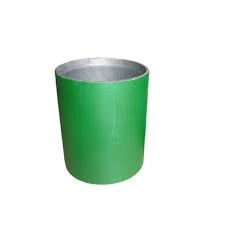- Afrikaans
- Albanian
- Amharic
- Arabic
- Armenian
- Azerbaijani
- Basque
- Belarusian
- Bengali
- Bosnian
- Bulgarian
- Catalan
- Cebuano
- Corsican
- Croatian
- Czech
- Danish
- Dutch
- English
- Esperanto
- Estonian
- Finnish
- French
- Frisian
- Galician
- Georgian
- German
- Greek
- Gujarati
- Haitian Creole
- hausa
- hawaiian
- Hebrew
- Hindi
- Miao
- Hungarian
- Icelandic
- igbo
- Indonesian
- irish
- Italian
- Japanese
- Javanese
- Kannada
- kazakh
- Khmer
- Rwandese
- Korean
- Kurdish
- Kyrgyz
- Lao
- Latin
- Latvian
- Lithuanian
- Luxembourgish
- Macedonian
- Malgashi
- Malay
- Malayalam
- Maltese
- Maori
- Marathi
- Mongolian
- Myanmar
- Nepali
- Norwegian
- Norwegian
- Occitan
- Pashto
- Persian
- Polish
- Portuguese
- Punjabi
- Romanian
- Russian
- Samoan
- Scottish Gaelic
- Serbian
- Sesotho
- Shona
- Sindhi
- Sinhala
- Slovak
- Slovenian
- Somali
- Spanish
- Sundanese
- Swahili
- Swedish
- Tagalog
- Tajik
- Tamil
- Tatar
- Telugu
- Thai
- Turkish
- Turkmen
- Ukrainian
- Urdu
- Uighur
- Uzbek
- Vietnamese
- Welsh
- Bantu
- Yiddish
- Yoruba
- Zulu
Understanding Petroleum Tubing Couplings for Efficient Oil and Gas Transportation
Understanding Petroleum Tubing Couplings Essential Components in Oil and Gas Industry
In the oil and gas industry, efficient transportation of extracted resources is crucial, and one of the key components that ensures this efficiency is the petroleum tubing coupling. These couplings serve as critical connectors between segments of tubing used to transport oil, gas, and other hydrocarbons from the wellbore to the surface, or through processing and transportation systems.
Petroleum tubing couplings are typically designed to connect lengths of tubing, facilitating the transmission of fluids under high pressure and temperature regimes that are characteristic of underground wells. They come in various types and configurations, crafted to meet specific operational requirements and environmental conditions associated with extraction sites.
Types of Couplings
There are primarily two types of petroleum tubing couplings integral and threaded. Integral couplings are manufactured as a single piece and are often used in high-pressure applications where strength and durability are necessary. On the other hand, threaded couplings feature male and female threads that allow for easy assembly and disassembly. This is advantageous during installation and maintenance, enabling operators to replace sections of tubing without extensive downtime.
Material Considerations
The material used to manufacture these couplings is equally important. Couplings are primarily made from high-strength steel grades such as API (American Petroleum Institute) L80, N80, and P110, which are specifically engineered to withstand the rigors of downhole conditions. These materials offer the necessary toughness and resistance to corrosion, wear, and fatigue, ensuring that they can perform reliably over extended periods.
petroleum tubing coupling

Some couplings also undergo special coatings or treatments to enhance their corrosion resistance, particularly in environments where H2S (hydrogen sulfide) or CO2 might be present. Such treatments are vital for maintaining the integrity of the couplings and preventing failures that could lead to costly accidents or environmental hazards.
Installation and Maintenance
Proper installation and maintenance of petroleum tubing couplings are critical to their performance. Operators must ensure that couplings are torqued to the correct specifications to prevent leaks or blowouts. Regular inspections should be conducted to identify signs of wear or corrosion, and any defective couplings must be replaced immediately to avoid operational complications.
Moreover, advancements in technology have introduced non-destructive testing methods and real-time monitoring systems that enhance the reliability of petroleum tubing couplings. These innovations allow for early detection of potential issues, enabling proactive maintenance strategies that improve overall safety and efficiency.
Conclusion
In summary, petroleum tubing couplings play a vital role in the oil and gas industry by facilitating the safe and efficient transport of hydrocarbons from underground reservoirs. Understanding the different types, material considerations, and maintenance practices associated with these couplings is essential for professionals in the field. With the continuing evolution of techniques and materials, the industry can expect even greater advancements in the reliability and effectiveness of petroleum tubing couplings, further contributing to the optimization of resource extraction and the minimization of environmental impact. As the energy demands of the world grow, the importance of such components will only increase, underscoring the need for ongoing research and development in this field.
-
Tubing Pup Joints: Essential Components for Oil and Gas OperationsNewsJul.10,2025
-
Pup Joints: Essential Components for Reliable Drilling OperationsNewsJul.10,2025
-
Pipe Couplings: Connecting Your World EfficientlyNewsJul.10,2025
-
Mastering Oilfield Operations with Quality Tubing and CasingNewsJul.10,2025
-
High-Quality Casing Couplings for Every NeedNewsJul.10,2025
-
Boost Your Drilling Efficiency with Premium Crossover Tools & Seating NipplesNewsJul.10,2025







